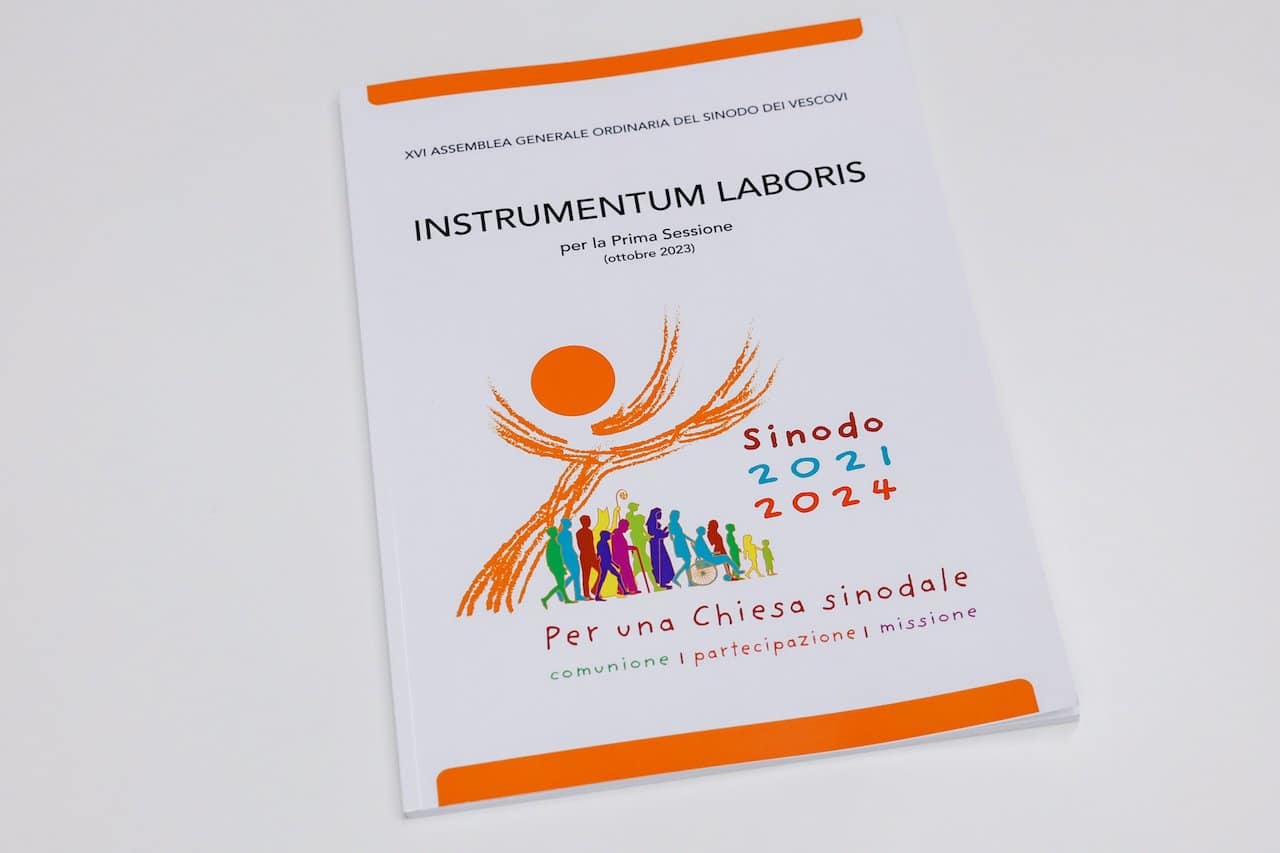(OSV News) — The working document released June 20 on the Catholic Church’s upcoming worldwide Synod on Synodality “presents the People of God with a remarkable opportunity to reflect on what we have learned thus far about the nature of a synodal Church and how we might embrace that more fully,” said Bishop Daniel E. Flores of Brownsville, Texas, in a same-day statement from the U.S. Conference of Catholic Bishops.
“While this document’s main purpose is to form the basis of the discernment taking place in Rome this October, I encourage everyone to read, pray and discuss this important document, and to see it in relation to the insights and fruits of their local, national, and continental Synodal consultations,” said Bishop Flores. The bishop chairs the USCCB’s Committee on Doctrine, and is tasked with “shepherding” the synodal process in the U.S.
The Holy See’s General Secretariat of the Synod issued the working document, or the Instrumentum Laboris as it’s known in Latin — for the first session of the 2021-2024 Synod: For a Synodal Church: Communion, Participation and Mission, also known as the Synod on Synodality. The synod’s first session is scheduled for October at the Vatican.
“The Instrumentum Laboris will form the basis for the discernment and discussion for the participants of the first session,” the USCCB statement explained.
This working document includes two main sections: “a reflection on the experience of a synodal Church thus far; and the articulation of three main priorities for a synodal Church,” the USCCB statement said. “Centering on the main themes of the Synod, communion, participation, and mission, these three main priorities are then explored in greater detail through a series of fifteen worksheets aimed at supporting the discernment of possible next steps for the Church.”
The working document follows the first two stages of the 2021-2024 Synod. The first, or diocesan, stage consisted of local listening sessions worldwide in 2021-2022. Information gathered from the first stage informed the second stage, where “continental groupings” of bishops conferences discussed and reflected on pressing needs in the Church. That stage produced seven continental reports submitted to the Holy See in March.
The United States and Canada held 12 virtual assemblies — seven in English, three in Spanish and two in French — between December 2022 and January 2023. Those assemblies included 931 appointed delegates and 146 bishops.
The U.S. national synthesis reflecting the diocesan stage in the U.S., and the “North American Final Document” from the continental phase are available at usccb.org/synod.
“The aim of this synodal process is not to provide a temporary or one-time experience of synodality, but rather to provide an opportunity for the entire People of God to discern together how to move forward on the path towards being a more synodal Church in the long-term,” the Vatican’s website on the synod states.
The Synod on Synodality is the 16th Ordinary General Assembly of the Synod of Bishops. As pope, St. Paul VI established the Synod of Bishops as a permanent institution in 1965 to “keep alive the positive spirit engendered” by the Second Vatican Council, according to the Holy See.
The upcoming synod consists of two sessions, the first in Oct. 4-29, 2023, and the second in October 2024.
Cardinal Jean-Claude Hollerich, relator general of the Synod on Synodality, in April “announced that about 21% of the synod’s 370 members would not be bishops, and at least half of that group would be women,” including religious sisters, according to Catholic News Service Rome.
“Since the Synod of Bishops was reinstituted after the Second Vatican Council, the voting members of the synod have all been men,” CNS Rome reported April 26. “The membership was primarily cardinals and bishops, except for the 10 priests — and recently one religious brother — elected by the men’s Union of Superiors General. … Past synods have included women as non-voting ‘auditors.'”
Since Vatican II, the bishops have gathered for 15 ordinary synods, most recently in 2018 to reflect on “Young People, the Faith and Vocational Discernment.”
Synods typically culminate in the pope issuing a post-synodal apostolic exhortation on the synod’s topic to provide a synthesis and guidance on the matter. The synod itself is not legislative in nature.
Pope Francis announced the Synod on Synodality in March 2020. He has described synodality as “a style, it is a walk together, and it is what the Lord expects from the Church of the third millennium.”





